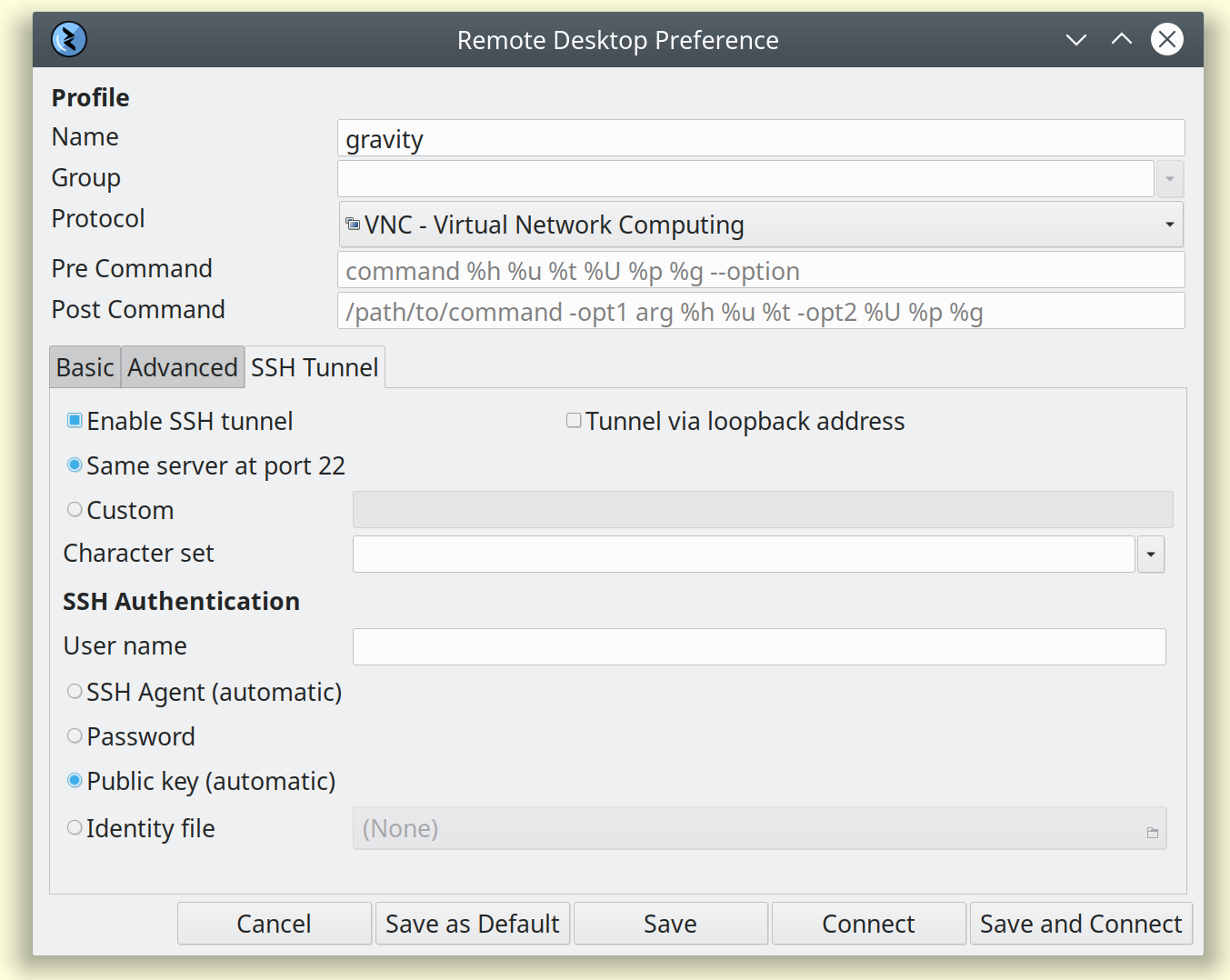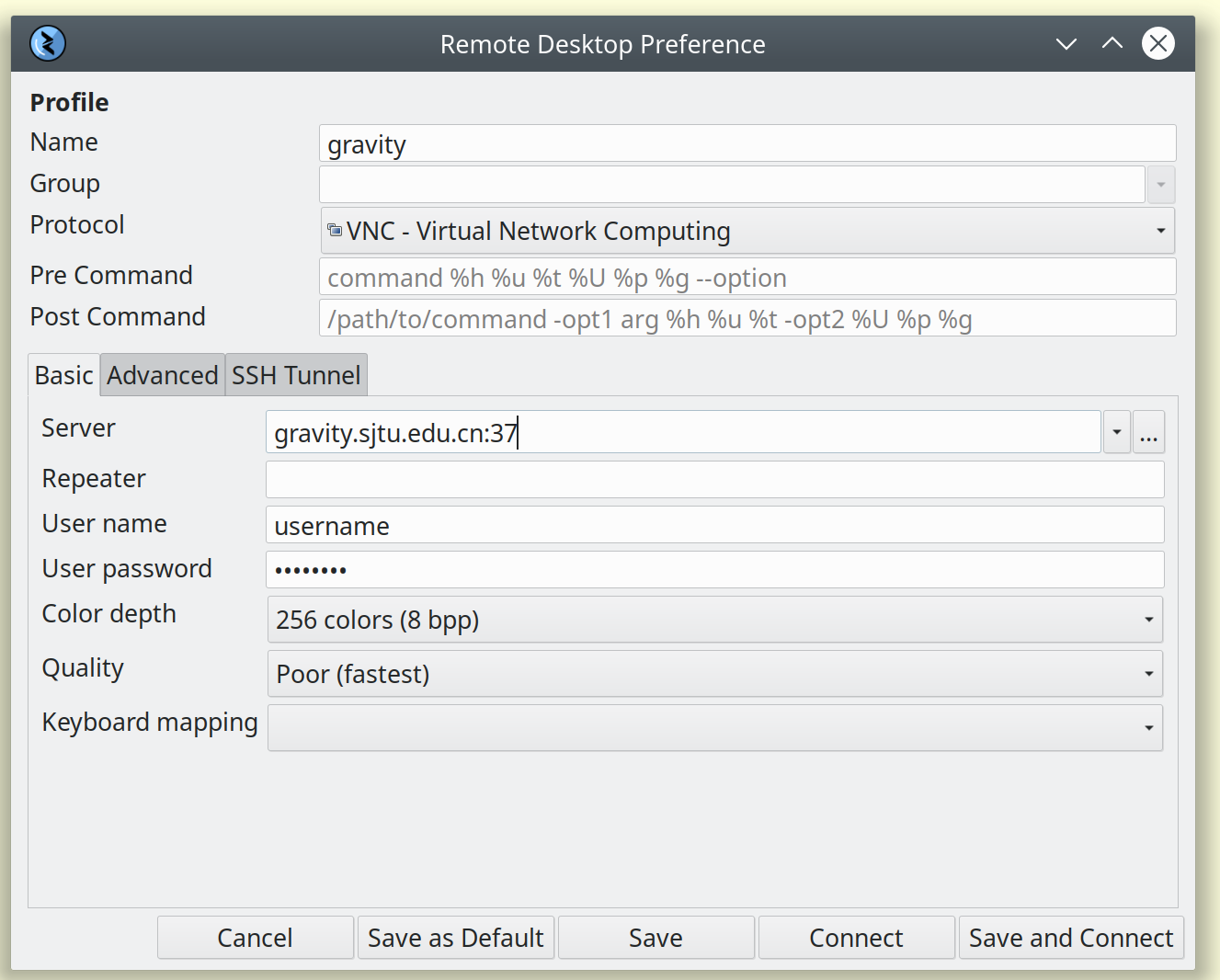
This command will change and/or store an obscured version of the password to the password file by default at HOME/.vnc/passwd. If you’d like to change your VNC server’s password in Linux you can use the vncpasswd command, which is the same command that’s run by the vncserver script the first time you start a VNC desktop. Now you can connect to your server via SSH, and while connected you can open your VNC client and connect to “localhost.” Once successful, you may want to consider closing the VNC port (probably 5901) on your Linux machine if you had previously connected directly via the Internet.

If you’d like to save the connection settings, navigate back to the Session settings and click the Save button.For the Designation Port, enter “localhost:” and the port for the VNC display/session you want to connect to, which is likely “5901” - so in this case you’d enter “localhost:5901”.You probably want to use “5900” - the default port used by clients - which means you don’t need to specify a port when connecting via the VNC client. For the Source Port, enter the port that you want to use when connecting via VNC over SSH on the local machine.Next, navigate to Connection > SSH > Tunnels.Enter your host name or IP of the SSH server and select the private key file like normal.Here’s how you’d configure the port forward when using the PuTTY SSH client: Then on the computer you’re remotely connecting from you can set up a port forward in the SSH client. To do so, you’ll first want to set up an SSH server and open the SSH port 22 on the machine you’re trying to remotely access. To fully secure your VNC sessions you can tunnel the traffic through a SSH connection to the server. Plus the actual VNC sessions aren’t encrypted at all.
#VNC THROUGH SSH CRACKED#
While VNC implements some sort of encryption for the login process, it’s not fully secure and the login password could be sniffed and cracked by people on the local network or Internet.

As a result, for this tutorial we assume you already have a VNC server installed and running on a Linux/Unix machine.

#VNC THROUGH SSH HOW TO#
Some Linux distros come with a VNC server pre-installed and for others you’ll probably find plenty of tutorials on how to get started, so we’ll skip the basics and share some security tips. If you’re new to Linux or Unix, you might prefer using a graphical user interface (GUI) over the command-line interface (CLI), and when remotely connecting you can use the remote desktop protocol and GUI-based Virtual Network Computing (VNC).


 0 kommentar(er)
0 kommentar(er)
